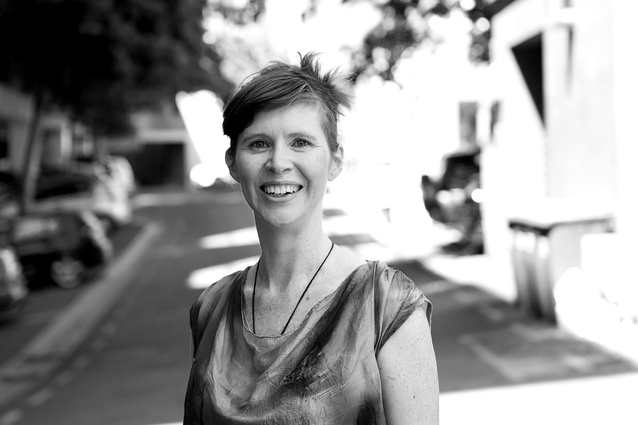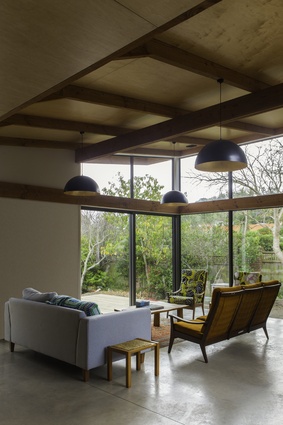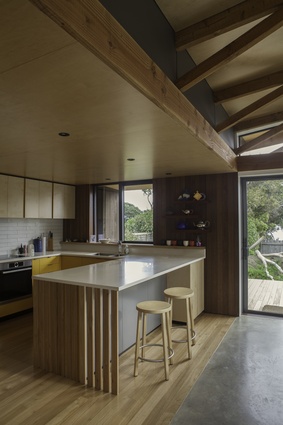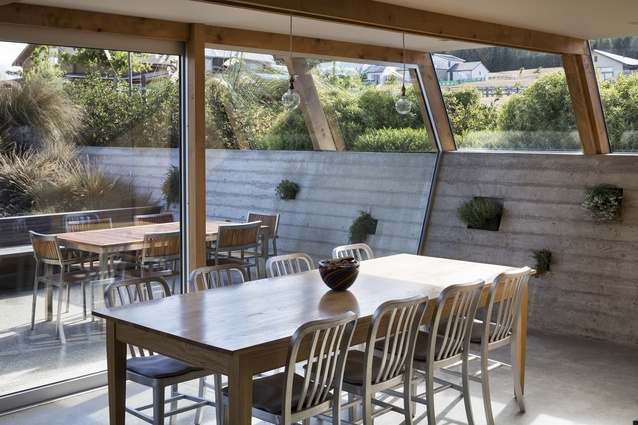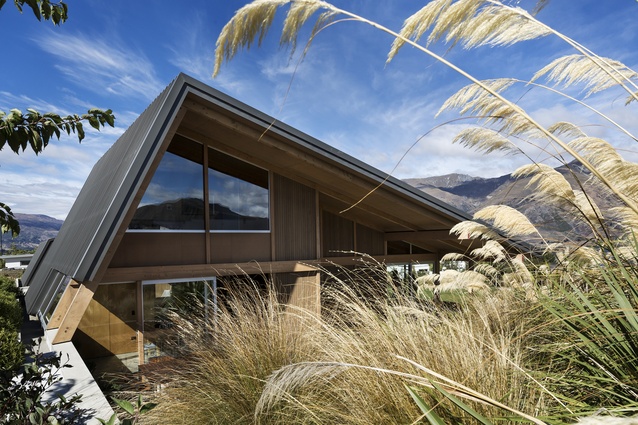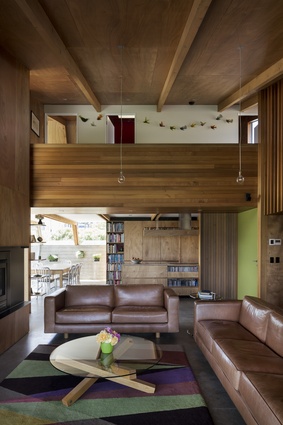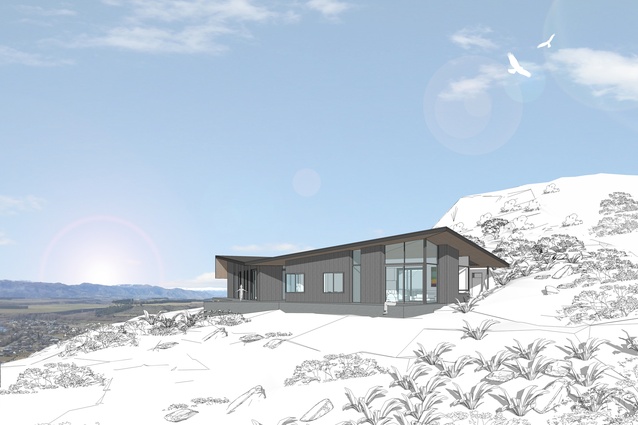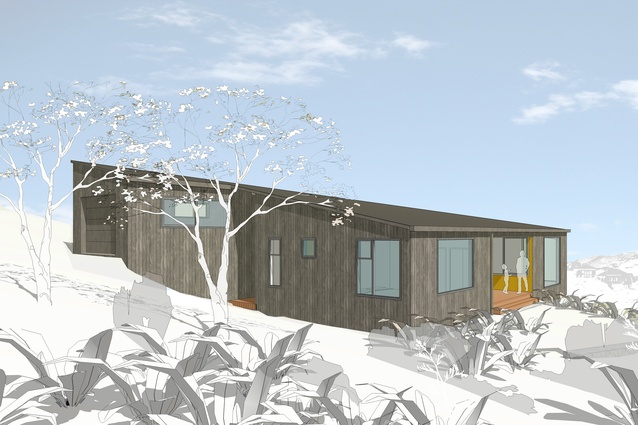Ana O’Connell of LoCA
A Wellington native, architect Ana O'Connell has worked for both Tennent + Brown and Jasmax on a range of residential, institutional and education projects. In 2013, Ana established Lovell and O’Connell Architects with Tim Lovell. They now have a thriving small practice based on Lyall Bay beach in Wellington.
Amelia Melbourne-Hayward chatted with Ana about her love of craft, how she juggles parenthood and practice and how working and living in the capital city inspires her.
Amelia Melbourne-Hayward: I’ve read that you loved making things, DIY style, from a young age. What were a few of your first ‘architectural briefs’?
Ana O’Connell: A love of making things was passed down to me from my Dad, who built our first home and did an extension to our second which took around 10 years to complete. I grew up to the rhythm of hammering and walking the aisles of the local timber merchant.
At the age of ten Dad gave me my first architectural brief to design our family woodshed, which we then built together. Dad and I went on to make a study desk bespoke to my quirky needs, and then ‘the coop’, an outhouse I lived in before leaving home. These experiences were formative to my love of designing and making at all scales.
AMH: How do you continue to utilise craft in your architectural designs today?
AO’C: My hands-on experience of building from a young age has informed my understanding in 3D of how things are put together and resolved. In my opinion, craft is about expert skills combined with care and heart, all of which I aim to embody in every architectural design.
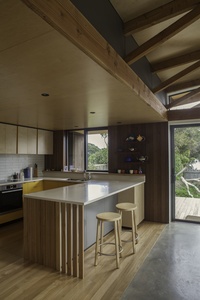
AMH: Do you still express yourself creatively in other ways?
AO’C: Dad and I are still as thick as thieves, with the addition of my husband James (also an architect) to the team. Over the last few years we have renovated our house, built a kitchen and we have also just finished making a rimu dining table out of our old bedframe. I have also had a side business designing and making jewellery, but nowadays LoCA keeps me too busy to develop this further.
AMH: What led you to leave Jasmax to start up Lovell & O’Connell Architects with Tom Lovell? Has it been hard going to get the practice established?
AO’C: Post the birth of my first child, an exciting proposition developed to establish a practice with Tim Lovell, my friend from University. Establishing the practice has been surprisingly easy, and having an award-winning new house commission [Wanaka House] under our belts has been a keystone to new commissions.
I think the hardest thing was making the decision to take the risk and start it! We started off with low overheads, both working from home, which enabled us the space to really think about our practice philosophy and how to make work/life balance work in reality.
Today we enjoy the creative environment of our beachfront office in Lyall Bay, surrounded by companies ranging from fellow architects to ceramists, web developers, animators and skincare producers.
AMH: The practice has been very much residential-focused thus far, what are your future plans or directions?
AO’C: We are a young practice, so we are still working out our future plans. We are keen to diversify beyond purely residential work, and next year we will be taking stock of this and making a few decisions.
AMH: What do you enjoy most about working in residential architecture?
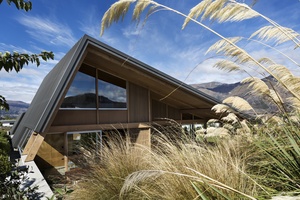
AO’C: I love working with families – it is quite an honour to be invited into their lives. Unlike the institutional or commercial work I have worked on, residential projects are extremely personal and intimate. You are often in almost a counselling role, facilitating decisions between husband and wife. Working directly with the people who will inhabit the space is also very rewarding, as it enables the architecture to be bespoke to a detail level.
AMH: What inspires your design process?
AO’C: People, landscape, beauty and the sublime.
AMH: How do you manage a work/life balance while running a busy practice?
AO’C: I think the key things that have enabled a balance (of sorts) are:
- the support of my Mum and husband with childcare
- the open mindedness of my business partner Tim
- getting a cleaner to do the bulk of our domestic chores
- being really organised and decisive.
Having two kids under four and starting a practice has been a rewarding juggle. I went into it aware of the challenges and underlying gender biases prevalent in our current culture. Before I had kids I talked with architects Sharon Jansen and Kerstin Thompson about their experiences, and lessons described by Kerstin Thompson in a lecture I helped organise were a touchstone.
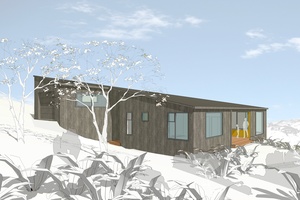
Having this awareness upfront meant that when I did have kids, I did not slip into the culturally assumed role of domestic mum dabbling in architecture on the side. I set up a plan which allowed me to enjoy being a director of the practice alongside being a mum. This involved heaps of discussions with my husband and business partner to break through subconscious gender roles and work structures. Together we worked out a creative plan.
AMH: You’ve worked in Wellington all your professional life – what about the built environment there do you take inspiration from and what are the area’s challenges?
AO’C: The inspiration I draw from Wellington’s built and unbuilt environment is summed up succinctly in a poem by Lauris Edmond (celebrated in one of the beautiful Catherine Griffiths sculptures on the waterfront):
It’s true you can’t live here by chance,
you have to do and be, not simply watch
or even describe. This is the city of action,
the world headquarters of the verb –
AMH: What is it like working in the city at the moment with the recent earthquakes?
AO’C: It has shaken me up physically and emotionally for sure. It feels like Wellington dodged a bullet (touch wood). Although many buildings over six storeys were seriously damaged, the infrastructure and residential houses were not affected. It has made me pause and seriously take stock of our earthquake and tsunami risks, as are most people in Wellington, judging by the amount of people I met at a local tramping shop alongside me buying water purifying tables for our EQ kit!
The Wellington City Council Building Consents team has been evacuated out of their building and insurers are currently reluctant to open new policies, so there are some potential project programme issues we are navigating through at the moment too.
AMH: The Wanaka House [which won a Housing Award at this year’s New Zealand Architecture Awards] has an unusual form. Where did the concept come from – what are the design drivers behind the house?
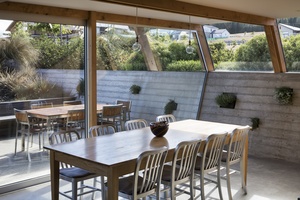
AO’C: The playful roof forms and design of the house draws inspiration from the original bivouac shelters pitched into the tough schist terrains of Central Otago. The house is conceived as a frame set into the land over which fabric is draped. An in-situ concrete wall runs through west corner offering a means to anchor the undulating roof within the site whilst also offering a practical thermal mass element to heat and cool with.
AMH: What is your favourite part of the house?
AO’C: My favourite place in the house is in the dining room, folded into a sun drenched chair hunkered down by the shuttered concrete retaining wall.
AMH: If you could build anywhere in New Zealand, what would you build and where?
AO’C: For myself, I would build a large-scale bronze sculpture using 3D printing technology in a converted warehouse made into a mint workshop.
If I suddenly had ten million dollars to spend on a project, I would design and get built a Steiner School in central Wellington.

